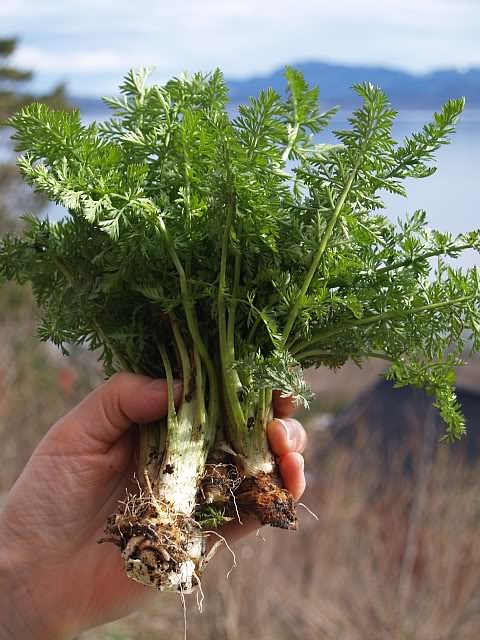From plot to plate: chefs' kitchen garden secrets | Life and style | The Guardian
Kitchen garden secrets:
Hazel tipis: Train indeterminate tomatoes up hazel tipis, growing four plants against each tipi.
Simon allows the first side shoot of each plant to grow, tying it against the main shoot.
This way he gets eight productive shoots from four plants.
Sun and shade: Shade can often inhibit flowering in some plants, but it does not stop them trying to develop leaves.
So plant fruiting crops in the sun and place salad leaves in the shadier parts of your plot.
Sowing deadline: Winter crops such as cavolo nero should be started in early summer.
Sowing any later than midsummer is pointless as plants do not have time to reach a worthwhile size before the chills of autumn curtail their growth.
Big cavolo nero plants in autumn will provide plenty of big healthy leaves for ribollita in winter.
Three crops from the same plant: Sow autumn broad beans in late summer, so you can then harvest the tips of already sturdy plants for a warm, mid-autumn day's salad.
The chefs at the River Cafe also serve the growing tips of broad beans in early summer, followed by the beans.
Vertical courgettes: If you are short of space in your garden sow climbing courgettes.
The Black Forest variety will reach 1.75m.
Vertically grown courgettes are much easier to pick than those on bushy plants, so you will not end up overlooking some of the fruits.
Double duty: A good example of companion planting is placing nasturtiums (Tropaeolum majus) next to your brassicas.
Not only does this look colourful but the nasturtiums also attract cabbage white butterflies, and hopefully they will lay their eggs on the flowers and not on your precious cabbages.
Confine roots: Grow chillies, sweet peppers and aubergines in 25cm/10in pots rather than in open ground, as a restricted root space will encourage plants to produce a heavier and healthier crop.
Baby leeks: A nice summer alternative to spring onions.
Sow as normal but do not thin out.
Choosing a variety: Look out for nurseries' specialist vegetable days around the country – they often provide tastings of different varieties.
Tomatoes: Raymond's favourite tomatoes are Roma, Marmande, Costoluto Fiorentino, Coeur de Boeuf and San Marzano.
Anne-Marie gives them as much space as possible as this helps develop a healthy bushy plant as opposed to a leggy specimen.
She supports plants with canes and pinches out the growing tip of each plant when it reaches 1.75m tall.
To aid pollination, she taps the plants when in flower.
Two is company: Dill is planted next to brassicas and left to flower and attract hoverflies.
Geraniums (Pelargonium) also attract beneficial insects.
Successional sowing: Sow spinach and radish every 10 days or so from mid‑spring to midsummer.
Replace summer radishes with the winter variety from then onwards.
Perfect soil: To grow plants successfully you must look after your soil.
For most plants in the veg patch, aim towards the holy grail of a free-draining, moisture-retentive soil of pH 6.5–7.0.
Water sparingly: Water only when absolutely necessary.
If needed, water very heavily but infrequently.
Grow hard: Plants given little extra water or nutrition are able to withstand pests and diseases better than soft pampered ones.
Make the soil and the plants do the work.
Take stock: View the garden, plants, soil and the animals within it as an interconnected ecosystem.
Learn the life cycles of your plants, about beneficial insects and pests, and discover how to grow well in an environmentally responsible way.
Play safe: Use seed compost for container sowing – potting or multipurpose compost is too rich in nutrients, and makes the seedlings develop too fast.
Water first: Always water your seed trays and modules before sowing, allowing the water to soak through and completely moisten the compost.
Start small: Plant just a few herbs that you are going to use in the kitchen.
This way you will be able to maintain them and harvest them regularly.
Cut back: Trim thyme, sage, lavender, mint, oregano, hyssop and savoury after flowering to encourage the plants to put on new growth for late season pickings.
It also helps to protect the plants from heavy rain, gales and snow.


